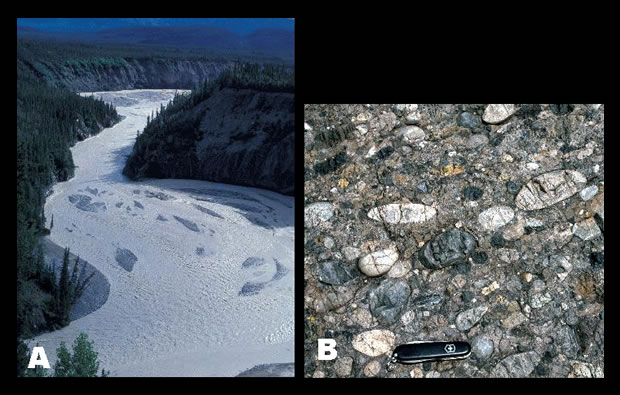
This river (A) carries so much sediment that there are places in the middle where islands of sand and gravel poke up above the water. When the sand and gravel is tumbled around in the river it becomes rounded like in the rock shown in (B). This sedimentary rock was once the sediment on the bottom of a river.
Back to the Table of Environments
(A) Martin Miller, University of Oregon and (B) Bruce Molnia, Terra Photographics. Both images courtesy of Earth Science World Imagebank.
Last modified January 6, 2004 by Lisa Gardiner.
You might also be interested in:
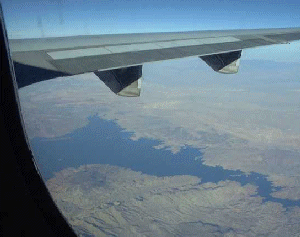
Rivers are very important to Earth because they are major forces that shape the landscape. Also, they provide transportation and water for drinking, washing and farming. Rivers can flow on land or underground
...more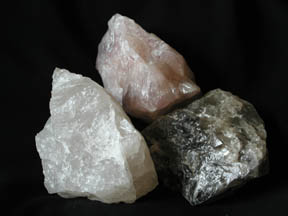
Spotting minerals is fun! There are many different types of minerals. Each has a different name and special traits. You can learn more about minerals by looking closely at them to understand their special
...more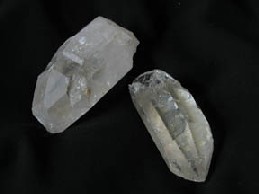
This mineral is called quartz! Sometimes it looks white like milk but usually it looks clear like glass, sometimes with a little pink or gray tinge of color. You can find crystals of quartz in many different
...more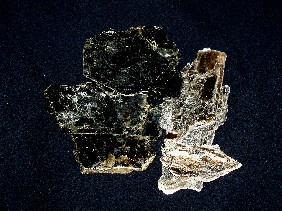
Mica minerals make some rocks sparkle! Look for them in your igneous and metamorphic rocks. Do they make your rocks sparkle? They break into flat plates because they have cleavage.
...more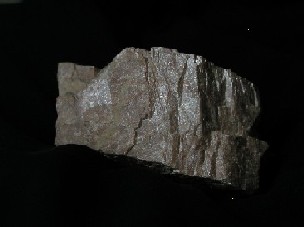
This is a feldspar mineral! Look for it in igneous rocks where it looks like white or pink crystals. You might find it in other types of rocks as well.
...more
The mineral that is green is called olivine! Look for it in igneous and metamorphic rocks. In this picture, olivine is filling a hole in the igneous rock.
...more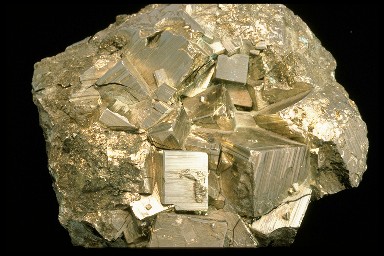
There are at least 2000 minerals on Earth. That's a lot of minerals! But you don't need to know all of them to spot the minerals lurking in the rocks of your backyard. That is because only a small number
...more















